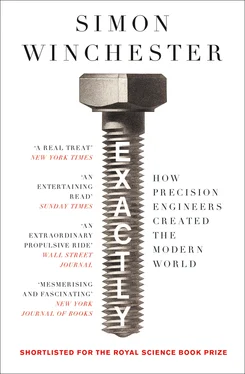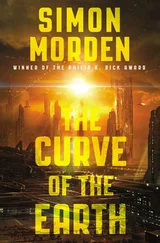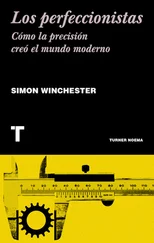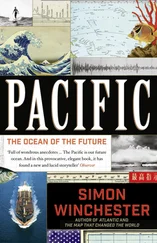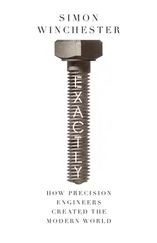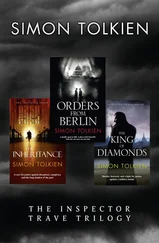Precision’s omnipresence is the simplest to illustrate.
A cursory look around makes the point. Consider, for example, the magazines on your coffee table, in particular the advertising pages. In a scant few minutes you could, for instance, construct from them a rough timetable for enjoying a precision-filled day.
You would begin your morning by first using a Colgate Precision Toothbrush; if you were clever enough to keep up with Gillette’s many product lines, you could enjoy less “tug and pull” on your cheek and chin by shaving with the “five precision blades” in its new Fusion5 ProShield Chill cartridge, and then tidying up your goatee and mustache with a Braun Precision Trimmer. Before the first meeting with a new acquaintance, be sure to have any former-girlfriend-related body art painlessly removed from your biceps with an advertised machine that offers patented “precision laser tattoo removal.” Once thus purified and presentable, serenade your new girlfriend by playing her a tune on a Fender Precision bass guitar; maybe take her for a safe wintertime spin after fitting your car with a new set of guaranteed-in-writing Firestone Precision radial snow tires; impress her with your driving skills first out on the highway and then at the curb with adroit use of the patented Volkswagen Precision parking-assist technology; take her upstairs and listen to soft music played on a Scott Precision radio (a device that will add “laurels of magnificent dignity to those of the world-record achievements” of the Chicago-based Scott Transformer Company—not all the magazines on an average coffee table are necessarily current). Then, if the snow has eased, prepare dinner in the back garden with a Big Green Egg outdoor stove equipped with “precision temperature control”; gaze dreamily over nearby fields newly sown with Johnson Precision corn; and finally, take comfort from the knowledge that if, after the stresses of the evening, you awake hungover or unwell, you can take advantage of the precision medicine that is newly available at NewYork-Presbyterian Hospital.
It took no time at all to tease out these particular examples from one randomly selected coffee-table pile. There are all too many others. I see, for instance, that the English novelist Hilary Mantel recently described the future British queen, née Kate Middleton, as being so outwardly perfect as to appear “precision-made, machine-made.” This went down well with neither royalists nor engineers, as what is perfect about the Duchess of Cambridge, and indeed with any human being, is the very imprecision that is necessarily endowed by genes and upbringing.
Precision appears in pejorative form, as here. It is also enshrined elsewhere and everywhere in the names of products, is listed among the main qualities of the function or the form of these products, is all too often one of the names of companies that produce such products. It is also used to describe how one uses the language; how one marshals one’s thoughts; how one dresses, writes by hand, ties ties, makes clothing, creates cocktails; how one carves, slices, and dices food—a sushi master is revered for the precise manner in which he shaves his toro —how cleverly one throws a football, applies makeup, drops bombs, solves puzzles, fires guns, paints portraits, types, wins arguments, and advances propositions.
QED, one might say. Precisely .
Precision is a much better word, a more apposite choice in all the examples just given, than is its closest rival, accuracy . “Accurate Laser Tattoo Removal” sounds not nearly as convincing or effective; a car with merely “Accurate Parking Technology” might well be assumed to bump occasional fenders with another; “Accurate Corn” sounds, at best, a little dull. And it surely would be both damning and condescending to say that you tie your tie accurately—to knot it precisely is much more suggestive of élan and style.
THE WORD precision , an attractive and mildly seductive noun (made so largely by the sibilance at the beginning of its third syllable), is Latin in origin, was French in early wide usage, and was first introduced into the English lexicon early in the sixteenth century. Its initial sense, that of “an act of separation or cutting off”—think of another word for the act of trimming, précis —is seldom used today: *the sense employed so often these days that it has become a near cliché has to do, as the Oxford English Dictionary has it, “with exactness and accuracy.”
In the following account, the words precision and accuracy will be employed almost but not quite interchangeably, as by common consent they mean just about the same thing, but not exactly the same thing—not precisely.
Given the particular subject of this book, it is important that the distinction be explained, because to the true practitioners of precision in engineering, the difference between the two words is an important one, a reminder of how it is that the English language has virtually no synonyms, that all English words are specific, fit for purpose by their often very narrow sense and meaning. Precision and accuracy have, to some users, a significant variation in sense.
The Latin derivation of the two words is suggestive of this fundamental variance. Accuracy ’s etymology has much to do with Latin words that mean “care and attention”; precision , for its part, originates from a cascade of ancient meanings involving separation. “Care and attention” can seem at first to have something, but only something rather little, to do with the act of slicing off. Precision, though, enjoys a rather closer association with later meanings of minuteness and detail . If you describe something with great accuracy, you describe it as closely as you possibly can to what it is, to its true value. If you describe something with great precision, you do so in the greatest possible detail, even though that detail may not necessarily be the true value of the thing being described.
You can describe the constant ratio between the diameter and the circumference of a circle, pi, with a very great degree of precision , as, say, 3.14159265 358979323846. Or pi can happily be expressed with accuracy to just seven decimal places as 3.1415927—this being strictly accurate because the last number, 7, is the mathematically acceptable way to round up a number whose true value ends (as I have just written, and noted before the gap I have placed in it) in 65.
A somewhat simpler means of explaining much the same thing is with a three-ring target for pistol shooting. Let us say you shoot six shots at the target, and all six shots hit wide of the mark, don’t even graze the target—you are shooting here with neither accuracy nor precision.
Maybe your shots are all within the inner ring but are widely dispersed around the target. Here you have great accuracy, being close to the bull’s-eye, but little precision, in that your shots all fall in different places on the target.
Perhaps your shots all fall between the inner and outer rings and are all very close to one another. Here you have great precision but not sufficient accuracy.

The image of a target offers an easy means of differentiating precision and accuracy. In A, the shots are close and clustered around the bull: there is both precision and accuracy. In B, there is precision, yes, but insofar as the shots miss the bull, they are inaccurate. C, with the shots widely dispersed, shows neither precision nor accuracy. And in D, with some clustering and some proximity to the bull, there is moderate accuracy and moderate precision—but very moderate.
Читать дальше
